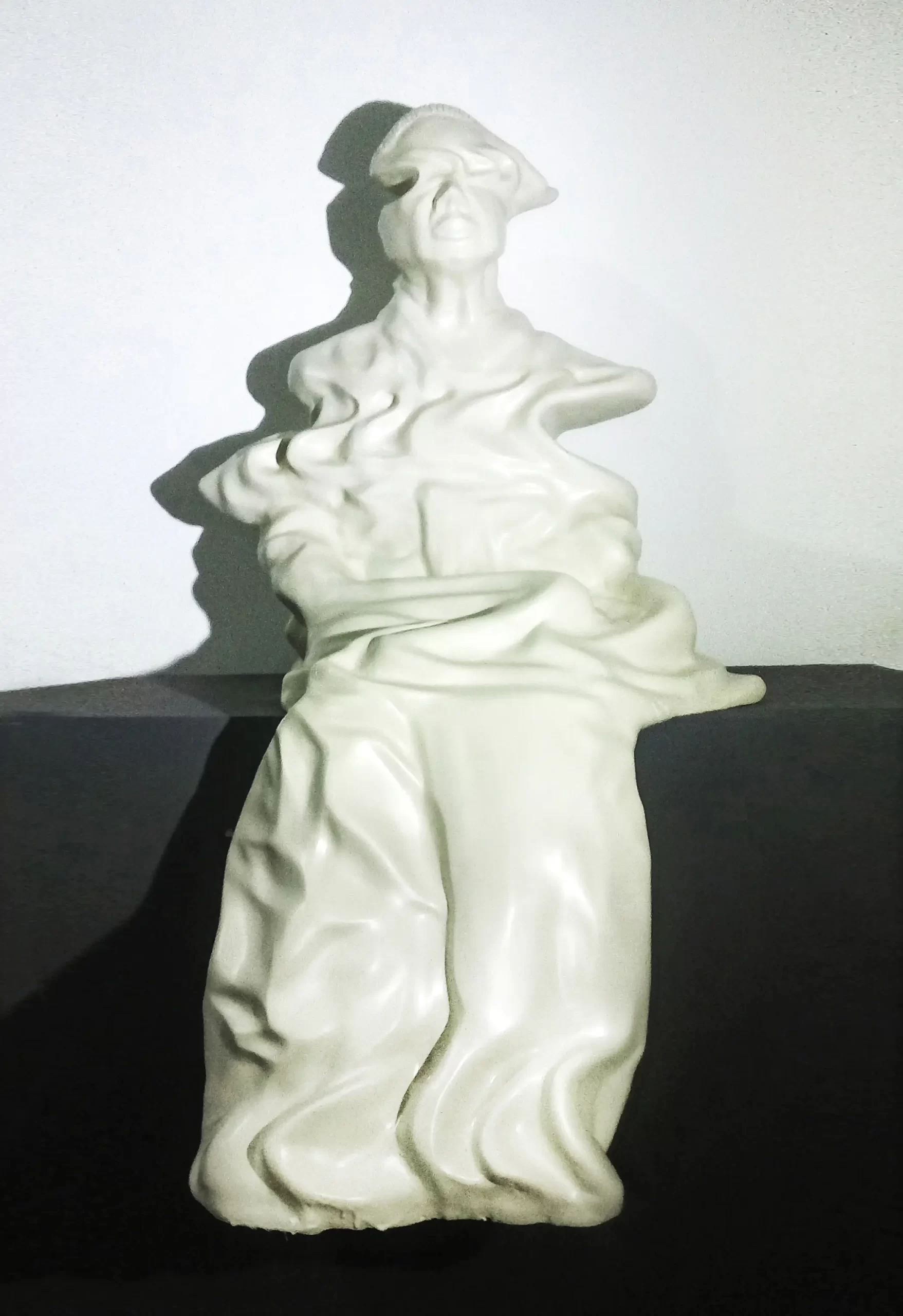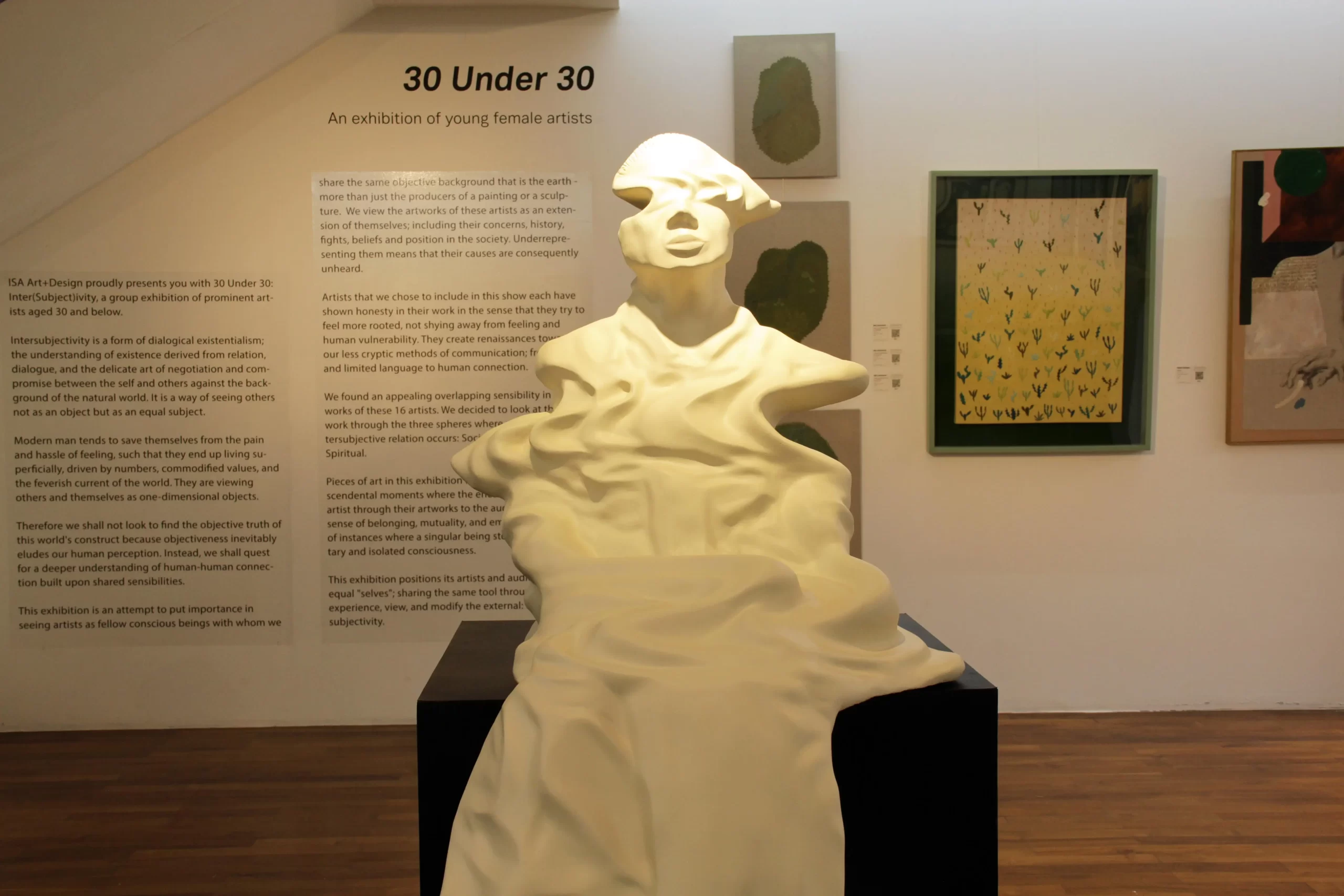The Portrait of Oma Pet
2023


This artwork is the second installment following the sculpture “De Njai” created in 2019. The inspiration for this work stems from the historical accounts of Indonesian women who lived with European men during the Dutch colonial period. The book “De Njai: Het Concubinaat in Nederlands-Indie,” published in 2008, sparked discussions regarding the lives of “nyai,” seeking to trace the patterns of relationships during the colonial era in the Dutch East Indies and shed light on the emergence of the Indo people and the role of Indonesian women.
The stories of Nyai women date back to the 1600s when employees of the Dutch East India Company (VOC) arrived in the Indonesian archipelago. The majority of these low-ranking VOC employees, such as clerks, soldiers, and ship crew members, were single and were stationed throughout Asia, including Indonesia. While waiting for suitable European wives, they took local women as concubines to satisfy their needs. These women were typically enslaved and worked in the households of European men, a situation they endured out of necessity to improve their economic conditions.
In the artwork “De Njai,” the term “nyai” (or sometimes nyahi) is emphasized, originating from the Balinese language, as it became associated with Balinese women in the 17th century who became concubines of European men during the VOC era in the Dutch East Indies. Initially, the term simply referred to “ordinary” women, but its connotations changed as concubinage practices developed, and it acquired a negative undertone. This artwork represents this phenomenon through the figure of a woman, translating her gestures and appearance from the portraits of a Nyai from the 18th century. Various parts of her body are deconstructed to resemble objects with looser molecular structures, symbolizing the biases and changes in the term “nyai” that have been carried along with the dynamic historical narratives.
My fascination with the figures that appear in old photographs of Nyai women led me to the portrait of a Sundanese woman who lived around the 1880s. She was one of the Nyai women known by the nickname “Djelema,” which in Sundanese means ‘person.’ She met a Dutch man named Aart in Bandung, who worked as a railway supervisor for the Staatsspoorwegen company. They got married in 1906 and had two children. Oma Pet converted to Christianity due to this marriage. Before the outbreak of World War II, Aart passed away, and one by one, Oma Pet’s children were detained and separated forever. She lived alone in Bandung and passed away in 1953.
Using the same artistic approach as in “De Njai,” I attempted to bring back the figure of Oma Pet in a sculpture with a deconstructed form. There were significant shifts that occurred in Oma Pet’s personal life due to concubinage practices, ranging from religious conversion to her separation from her children. This artwork aims to honor her memory and the complex historical and personal narratives surrounding her life.
The Portrait of Oma Pet
2023
SIZE
106 x 62 x 67
MEDIUM
Resin